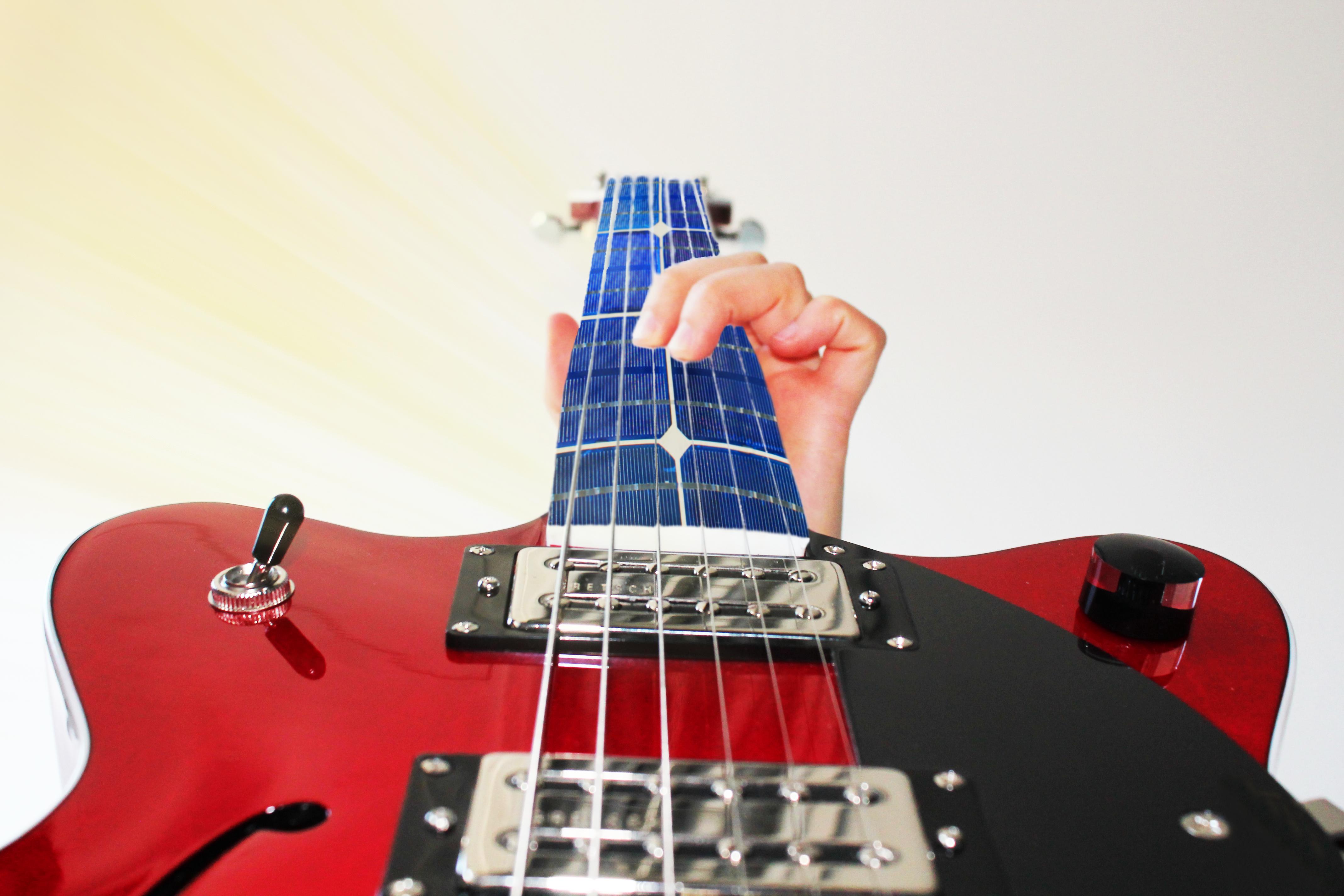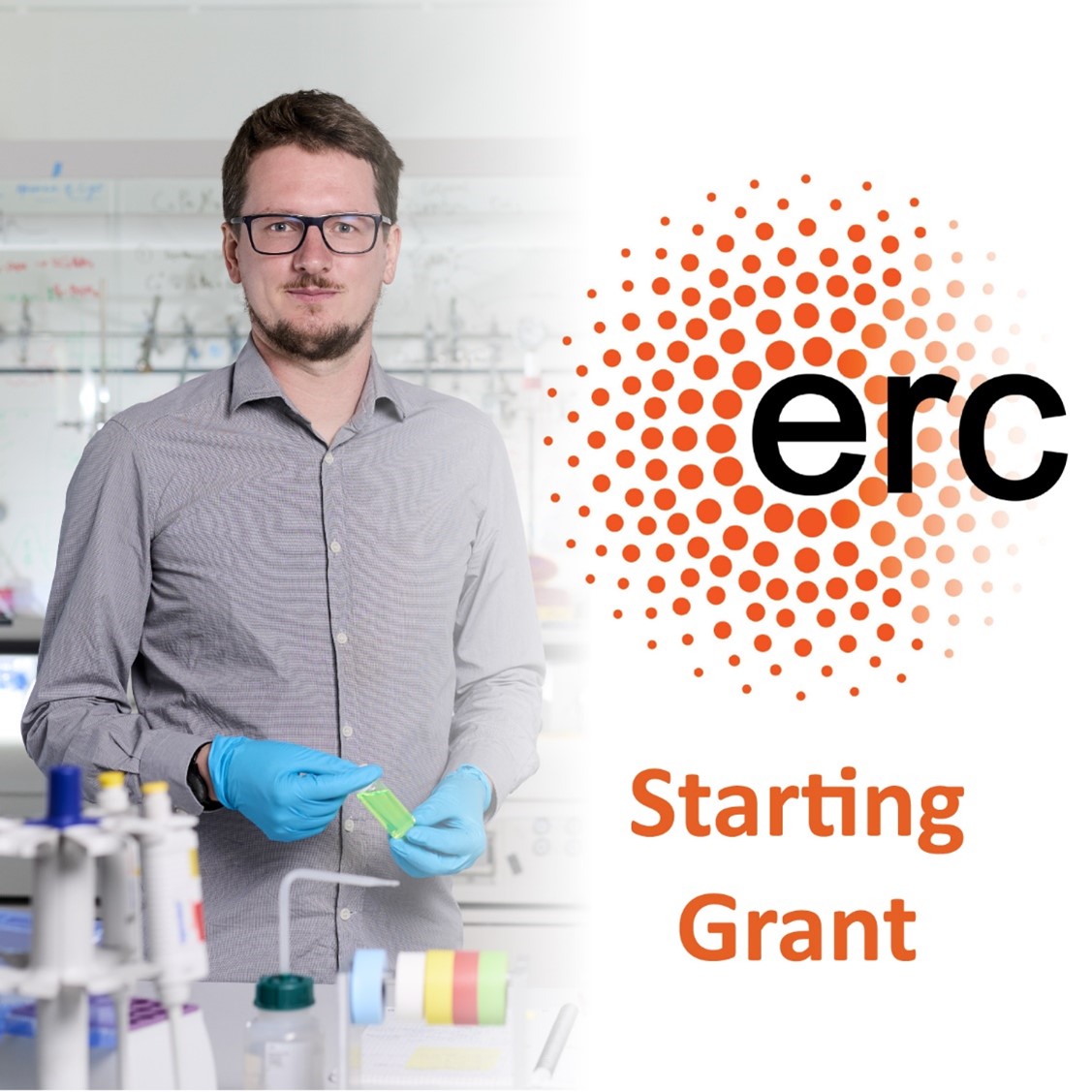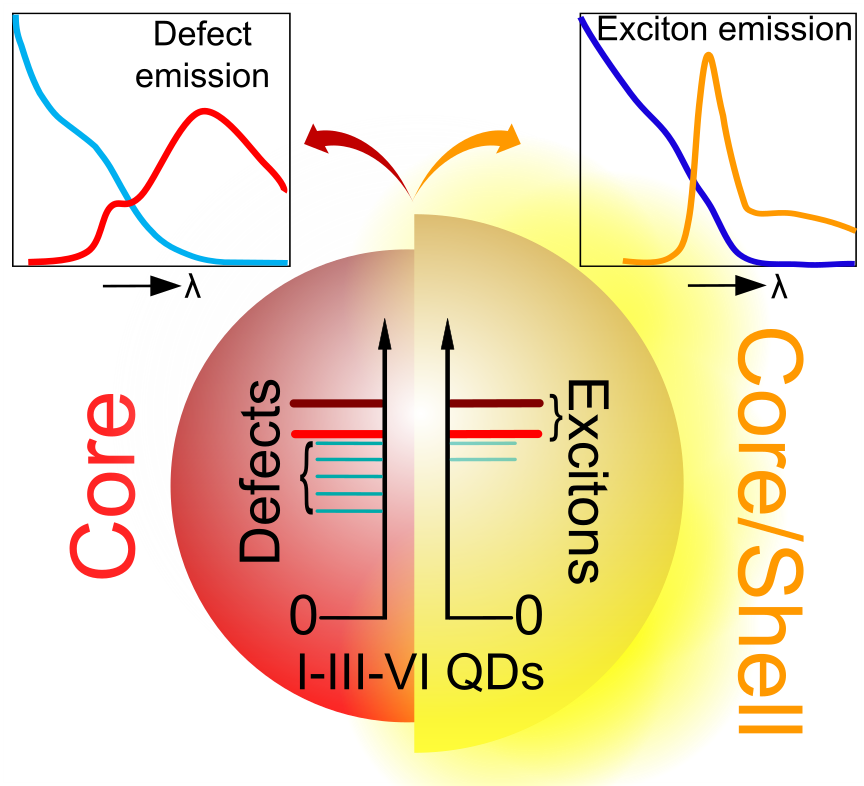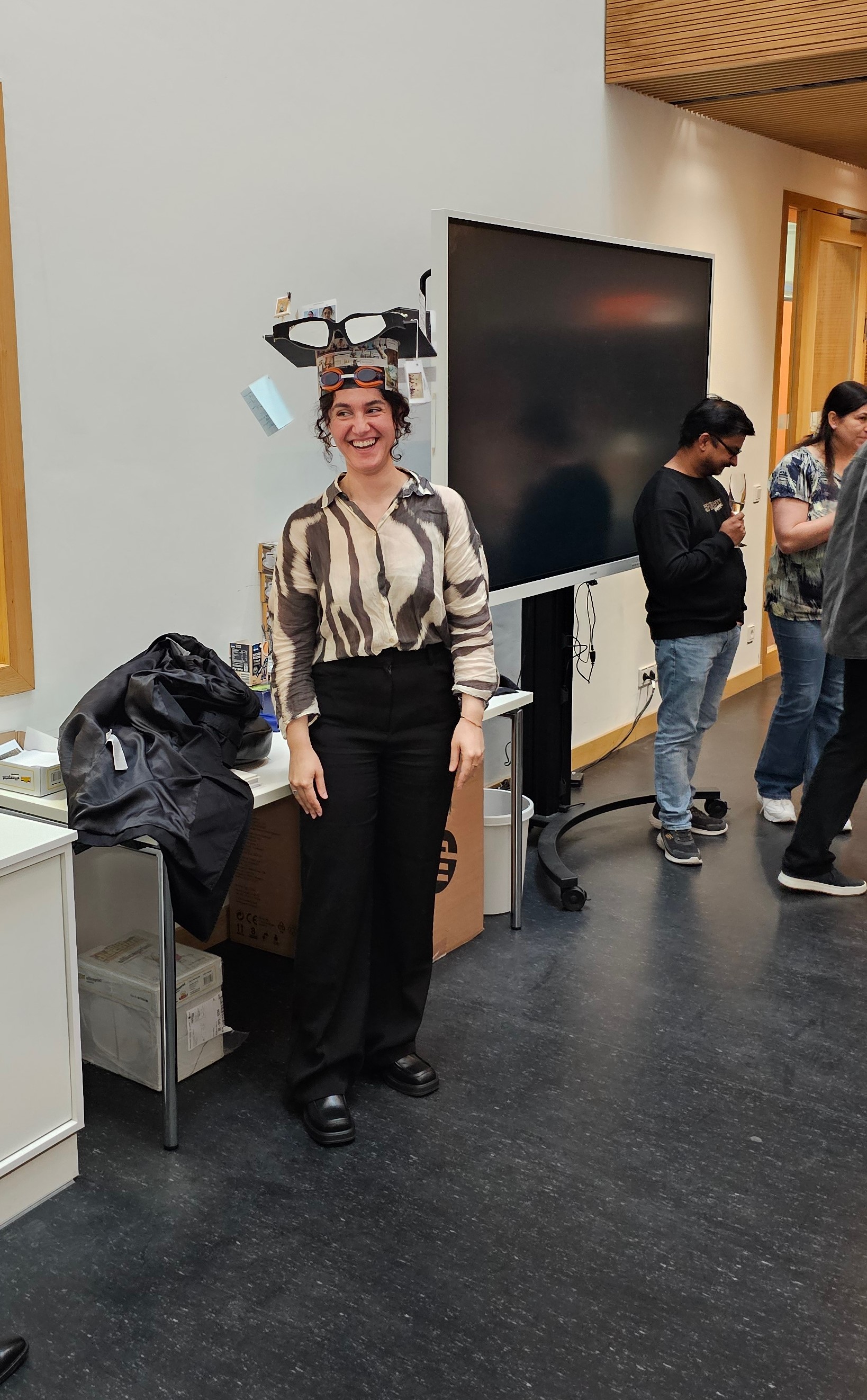Content
Aurora Manzi et al. in Nature Communications: optical “overtones” for solar cells
Energy Conversion
20.04.2018

Analogous to a phenomenon known for music instruments when overtones of two different fundamental notes get into resonance, NIM scientists from LMU Munich have found a new effect regarding the optical excitation of charge carriers in a solar semiconductor. It could facilitate the utilization of infrared light, which is normally lost in solar devices.
Semiconductors are nowadays the most prominent materials to convert solar light into usable electric energy. The International Energy Agency (IEA) reported that half a million solar panels were installed every day around the world last year. However, semiconductor-based solar cells still suffer from relatively low energy conversion efficiencies. The reason for that mainly lies in the fact that semiconductors efficiently convert the light from a quite small portion of the solar spectrum into electrical power. The spectral position of this window of light that can be efficiently converted is strongly related to a property of the semiconductor involved (that is, its band-gap). This means that, if the semiconductor is designed to absorb yellow light, longer-wavelength light (such as red and infrared light), will pass through the material without producing currents. Additionally, shorter-wavelength light (green, blue and UV light), that is more energetic than yellow light, will lose its additional amount of energy into heat. Obtaining higher energy conversion efficiencies from semiconductors is therefore still a big challenge.
Perovskite nanocrystals for energy conversion
To study these limitations, Aurora Manzi, a PhD student from the Chair for Photonics (http://www.phog.physik.lmu.de/) led by Prof. Jochen Feldmann, has measured the charge carrier density created by the absorption of multiple photons in perovskite nanocrystals, a novel and promising material for photovoltaic applications.
“Multiple photon absorption of long-wavelength light with an energy lower than the semiconductor absorption window is usually very inefficient.”, highlights Manzi, first author of the publication in Nature Communications and a student of the NIM graduate program. “I was therefore totally surprised to observe that for specific excitation wavelengths the efficiency of this process becomes drastically enhanced. At the beginning this did not make any sense to us!”.
Light and exciton “overtones” in resonance
After intense discussions, the team of LMU scientists realized that these resonances occur when multiples of two distinct fundamental frequencies become equal, namely that of the frequency of the primary light oscillation and that of the frequency of the band gap or more precisely of the exciton at the band-gap.
One could draw an analogy to resonance or overtone phenomena in acoustics, commonly used in music instruments. When intense red light impinges on nano-structured perovskite nanocrystals, a process similar to the generation of overtones in a guitar string takes place. The fundamental light wavelength generates higher order optical harmonics, that are overtones whose frequencies are integer multiples of the primary light oscillation. When such a “light overtone” becomes resonant with an overtone of the excitonic band-gap, the energy exchange is enhanced leading to an increased generation of charge carriers or more precisely of multiple excitons at the band gap.
Starting point for further research
“The resonances observed are analogous to the physical phenomena taking place in two different strings of a guitar”, continues Manzi. “If we associate the first string to the light excitation and the second string to the semiconductor excitonic band-gap, we know from acoustics that they will get into resonance if a certain harmonic of the first string will match another harmonic of the second string.”
“The observation of this novel resonance phenomenon for optical excitations in excitonic semiconductors could pave the way for solar cells to more efficiently convert long-wavelength light into usable electric power”, adds Prof. Feldmann, the leader of the research team. “This is an exciting new finding with a possible impact for future solar devices. Together with our colleagues from the Research Network “Solar Technologies Go Hybrid” (SolTech), we will now try to develop innovative applications by playing with such overtones.”
Publication:
Resonantly enhanced multiple exciton generation through below-band-gap multi-photon absorption in perovskite nanocrystals.
Manzi A, Tong Y, Feucht J, Yao E-P, Polavarapu L, Urban AS, Feldmann J.
Nature Communications 9, Article number:1518 (2018) Published online: 17 April 2018
Press release on NIM and LMU Websites:
http://www.nano-initiative-munich.de/en/press/press-releases/meldung/n/optical-overtones-for-solar-cells/
http://www.uni-muenchen.de/forschung/news/2018/feldmann_solarzellen.html
Contact: Prof Dr Jochen Feldmann
Chair for Photonics and Optoelectronics
Ludwig-Maximilian-Universität Amalienstraße 54
80799 Munich
Germany
Phone: +49 (0)89 2180 3359
E-Mail: feldmann@lmu.de
Web: http://www.phog.physik.uni-muenchen.de/
Energy Conversion
20.04.2018

Analogous to a phenomenon known for music instruments when overtones of two different fundamental notes get into resonance, NIM scientists from LMU Munich have found a new effect regarding the optical excitation of charge carriers in a solar semiconductor. It could facilitate the utilization of infrared light, which is normally lost in solar devices.
Semiconductors are nowadays the most prominent materials to convert solar light into usable electric energy. The International Energy Agency (IEA) reported that half a million solar panels were installed every day around the world last year. However, semiconductor-based solar cells still suffer from relatively low energy conversion efficiencies. The reason for that mainly lies in the fact that semiconductors efficiently convert the light from a quite small portion of the solar spectrum into electrical power. The spectral position of this window of light that can be efficiently converted is strongly related to a property of the semiconductor involved (that is, its band-gap). This means that, if the semiconductor is designed to absorb yellow light, longer-wavelength light (such as red and infrared light), will pass through the material without producing currents. Additionally, shorter-wavelength light (green, blue and UV light), that is more energetic than yellow light, will lose its additional amount of energy into heat. Obtaining higher energy conversion efficiencies from semiconductors is therefore still a big challenge.
Perovskite nanocrystals for energy conversion
To study these limitations, Aurora Manzi, a PhD student from the Chair for Photonics (http://www.phog.physik.lmu.de/) led by Prof. Jochen Feldmann, has measured the charge carrier density created by the absorption of multiple photons in perovskite nanocrystals, a novel and promising material for photovoltaic applications.
“Multiple photon absorption of long-wavelength light with an energy lower than the semiconductor absorption window is usually very inefficient.”, highlights Manzi, first author of the publication in Nature Communications and a student of the NIM graduate program. “I was therefore totally surprised to observe that for specific excitation wavelengths the efficiency of this process becomes drastically enhanced. At the beginning this did not make any sense to us!”.
Light and exciton “overtones” in resonance
After intense discussions, the team of LMU scientists realized that these resonances occur when multiples of two distinct fundamental frequencies become equal, namely that of the frequency of the primary light oscillation and that of the frequency of the band gap or more precisely of the exciton at the band-gap.
One could draw an analogy to resonance or overtone phenomena in acoustics, commonly used in music instruments. When intense red light impinges on nano-structured perovskite nanocrystals, a process similar to the generation of overtones in a guitar string takes place. The fundamental light wavelength generates higher order optical harmonics, that are overtones whose frequencies are integer multiples of the primary light oscillation. When such a “light overtone” becomes resonant with an overtone of the excitonic band-gap, the energy exchange is enhanced leading to an increased generation of charge carriers or more precisely of multiple excitons at the band gap.
Starting point for further research
“The resonances observed are analogous to the physical phenomena taking place in two different strings of a guitar”, continues Manzi. “If we associate the first string to the light excitation and the second string to the semiconductor excitonic band-gap, we know from acoustics that they will get into resonance if a certain harmonic of the first string will match another harmonic of the second string.”
“The observation of this novel resonance phenomenon for optical excitations in excitonic semiconductors could pave the way for solar cells to more efficiently convert long-wavelength light into usable electric power”, adds Prof. Feldmann, the leader of the research team. “This is an exciting new finding with a possible impact for future solar devices. Together with our colleagues from the Research Network “Solar Technologies Go Hybrid” (SolTech), we will now try to develop innovative applications by playing with such overtones.”
Publication:
Resonantly enhanced multiple exciton generation through below-band-gap multi-photon absorption in perovskite nanocrystals.
Manzi A, Tong Y, Feucht J, Yao E-P, Polavarapu L, Urban AS, Feldmann J.
Nature Communications 9, Article number:1518 (2018) Published online: 17 April 2018
Press release on NIM and LMU Websites:
http://www.nano-initiative-munich.de/en/press/press-releases/meldung/n/optical-overtones-for-solar-cells/
http://www.uni-muenchen.de/forschung/news/2018/feldmann_solarzellen.html
Contact: Prof Dr Jochen Feldmann
Chair for Photonics and Optoelectronics
Ludwig-Maximilian-Universität Amalienstraße 54
80799 Munich
Germany
Phone: +49 (0)89 2180 3359
E-Mail: feldmann@lmu.de
Web: http://www.phog.physik.uni-muenchen.de/
Service
NEWS
08.09.2025
! Great News ! : Quinten Akkerman has been awarded an ERC Starting Grant

25.08.2025
Congratulations! Alexander-von-Humboldt Fellowship for Kushagra Gahlot
24.06.2025
Eco-friendly Quantum Dots Receive a Clean Surface and Become Brighter

23.05.2025
Congrats to Mariam for passing her PhD exam


